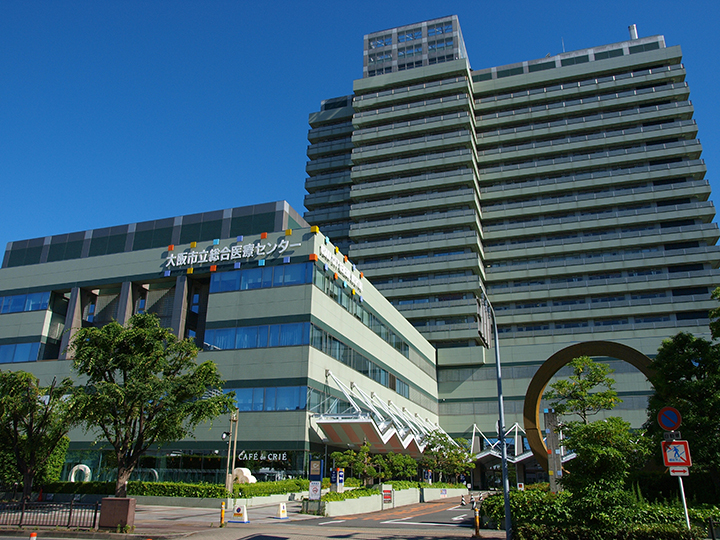About us
Hospital Overview/Policy/Endeavors

Principles
Heart for Public Service ? We aspire to be a public hospital which is widely trusted by our residents and
contributes to the community.
Humane ? We strive to be a hospital that provides warm, patient-friendly medical care.
High Technology ?We strive to be a hospital which provides advanced specialized medical treatment and highly
trained medical personnel.
Basic Policy of the Osaka City General Hospital
Provide high-quality medical care as best we can in an equal and fair manner in addition to making efforts
to ensure the humanity of the patient and their right to live in good health is respected. (Patient’s
Rights)
Medical staff will put the patient’s needs first and provide trustworthy medical care by working in a
collaborative and complementary manner while increasing their own specialization. (Team Medical Care)
As an Osaka City core hospital, to strengthen collaboration based on appropriate role-sharing with community
medical institutions and provide the necessary medical care as “the last resort for saving the lives and
protecting the health of our residents.” (Collaboration in Community Medical Care)
When explaining about an illness or treatment plan, explanations will be made in a manner that the patient
can understand and accept, taking into account the patient’s age, degree of comprehension and psychological
condition.
Provide a thorough explanation about its content and respect the patient’s right to decide when proposing
treatment or testing methods. (Informed Consent)
Provide medical care and a therapeutic environment in which patients can receive treatment while confident
that efforts are being made toward medical care safety and protection of their personal information, etc.
(Quality of Medical Care)
Provide government-mandated and organ-specific specialized medical care in the fields of infectious disease,
emergency, disaster, pediatric/prenatal, and psychiatric medical care, etc. (Medical Functionality)
Improve the quality of medical care standards by conducting research directly linked to clinical settings,
and putting the discovered results of this research back into medical care settings. (Medical Functionality)
Provide specialized medical care featuring the latest advanced medical technology by implementing a system
that both introduces new medical devices, and improves the skills of medical practitioners and a system for
career advancement. (Securing Human Resources, Medical Functionality)
Establish a sound management foundation and create a system where high-quality medical care can be
continuously provided. (Medical Economics)
Basic Policy for Examinations in Hospital Wards
As a community based hospital, to prepare the hospital wards so they can provide advanced, organ-specific
specialized and emergency medical care based on government-mandated medical care.
Create hospital wards with organ-specific clinical departments in addition to a safe inpatient environment
that consists of clinical departments where medical and nursing care are similar, etc.
Establish hospital wards (beds) based on the severity of the patient’s condition and strive for efficient
use of medical resources by bringing related hospital wards into closer proximity.
Promote team medical care and make treatment more efficient though the active utilization of the inpatient
treatment plan. (Clinical Path)
In cases where a disease manifests itself in childhood and treatment is still necessary after the age of
fifteen, the pediatric and adult physician in charge of the relevant disorder will treat the patient
together. In principle, a medical care environment will be created where ongoing treatment can be received
in the adult hospital wards.
Basic Policy for Outpatient Treatment
Collaboration will be reinforced through role-sharing with community medical institutions by implementing
outpatient care on an appointments-only basis and establishing organ-specific specialized outpatient care.
Formulate “Follow-up Visit Standards” and create a system where medical care is provided in a
community-contained model where patients who do not require specialized treatment are referred back to
community medical institutions.
Create a treatment environment where patients can receive examinations with peace of mind by expanding the
capability to triage outpatients, increasing medical care and at- home consultations, and strengthening
measures to protect personal information, etc.
Work to increase support for patients and create a comfortable outpatient treatment environment.
Basic Policy for Emergency Treatment
To provide the required emergency medical care as a core hospital for Osaka City as “the last place where
residents can turn to protect their lives and health” in collaboration with regional medical facilities.
Provide parallel emergency medical care with the close cooperation of the Emergency Department, Intensive
Care Unit, organ-specific clinical departments, and Central Surgical Division in order to provide emergency
medical care from the onset to patients of all age groups in critical condition whose time is limited due to
critical respiratory or cardiovascular failure. (Tertiary emergency patients)
Even in emergency medical care, to provide informed consent that is as easy to understand as possible and
work to protect personal information.
As part of clinical education, to create a treatment system where resident physicians also take part in
early-stage emergency treatment with a medical instructor.
In the event of a large-scale disaster, as a Disaster Base Hospital, to provide early-stage emergency
treatment immediately after the disaster and dispatch Disaster Medical Assistance Teams (DMAT), etc.
Medical Care Functions
- Serve as an emergency critical care facility that is open 24 hours a day, 365 days a year.
- An organ-based examination system has been adopted in order to provide advanced, specialized medical care
primarily for the three major diseases of cancer, heart disease, and cerebro-vascular disease. Also, the
hospital provides advanced medical care for high-risk prenatal and pediatric medical care, as well as for
infectious diseases. - Promote medical care by collaborating with local medical institutions.
- Serve as a postgraduate medical training hospital.
